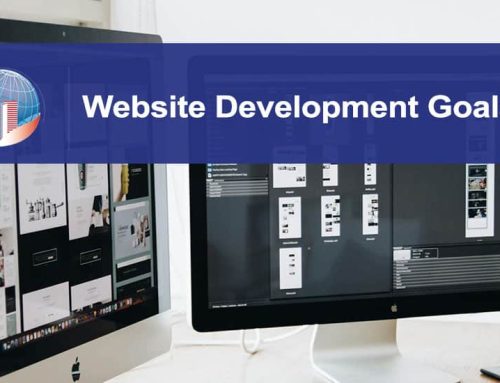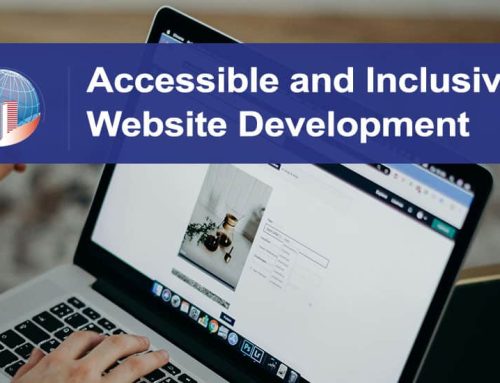Ensure a Seamless Experience: How to Optimize Your Website for Mobile
In today’s digital world, a mobile-friendly website is essential for user engagement and search engine rankings. If your website appears distorted, misaligned, or broken on mobile devices, it can frustrate visitors and lead to lost opportunities. Mobile responsiveness is crucial in delivering a smooth user experience across different screen sizes. Understanding why your website may not display correctly on smartphones and tablets can help you take the proper steps to optimize your website for mobile and enhance its functionality.
Common Reasons Your Website Looks Different on Mobile
Your Website Isn’t Mobile Responsive
A responsive website automatically adjusts its layout and design based on the device used. If your website isn’t built with a responsive design, elements like images, buttons, and text may appear misaligned or oversized on mobile screens. Google prioritizes mobile-friendly websites, so if your site lacks responsiveness, it can impact user experience and search rankings. Implementing a mobile-first approach ensures your website functions seamlessly across all devices.
Incompatible Themes or Outdated Code
Not all website themes are optimized for mobile use. If your theme is outdated or wasn’t designed with mobile responsiveness in mind, it may cause layout issues when viewed on a smaller screen. Additionally, older coding practices that rely on fixed-width layouts or tables can create display problems. Updating your theme or switching to a mobile-friendly framework can resolve these issues and improve performance on all screen sizes.
Slow Loading Speed on Mobile
Page speed is a critical factor in mobile usability. If your website takes too long to load on mobile devices, users may abandon it before it fully renders. Common causes of slow performance include large image files, excessive scripts, and unoptimized CSS. Techniques like lazy loading, image compression, and browser caching can significantly enhance mobile loading speed. Google’s PageSpeed Insights tool can help identify areas for improvement.
Viewport Issues and Improper Scaling
Websites that don’t specify a proper viewport meta tag may not scale correctly on mobile devices. Without a defined viewport, mobile browsers may render your site as a desktop version, shrinking the content to fit the screen. This often results in tiny text, excessive zooming, and a poor user experience. Ensuring your website includes the correct meta viewport tag allows it to scale correctly across all mobile devices.
How to Optimize Your Website for Mobile
Use a Mobile-Responsive Design
Adopting a mobile-responsive design is the best way to ensure a consistent experience across all devices. A responsive layout uses flexible grids, fluid images, and adaptive CSS media queries to adjust content dynamically. This approach eliminates the need for separate desktop and mobile versions of your website while ensuring a seamless user experience. By taking the right steps to optimize your website for mobile, you can improve accessibility, enhance performance, and boost engagement across all screen sizes.
Optimize Images and Media for Faster Loading
Large media files can slow down your website and affect mobile usability. To optimize your website for mobile, compress images using modern formats like WebP while maintaining quality. Additionally, enabling lazy loading ensures that images only load when they come into view, reducing initial page load time. Videos should also be appropriately embedded and compressed to prevent buffering issues.
Minimize Unnecessary Pop-Ups and Intrusive Elements
Pop-ups and interstitials can be frustrating on mobile screens, especially if they are challenging to close. Google penalizes websites with intrusive mobile pop-ups, as they negatively impact user experience. Keeping pop-ups minimal or ensuring they are easily dismissible improves usability while maintaining engagement.
Improve Mobile Navigation and Readability
Navigation should be simple and easy to use on smaller screens. Extensive menus or excessive dropdowns can be challenging to navigate on mobile devices. Implementing a hamburger menu keeps navigation compact and accessible. Text readability is equally essential—ensure that font sizes are legible without requiring users to zoom in. Using straightforward typography and ample spacing enhances readability across all devices.
Enable Accelerated Mobile Pages (AMP) for Faster Loading
AMP is a framework designed to improve mobile page speed by removing unnecessary scripts and optimizing content delivery. While it may not be necessary for all websites, AMP can significantly enhance performance for blogs and content-heavy sites. Implementing AMP ensures that your website loads instantly on mobile devices, providing a better user experience and improving search rankings.
How Mobile-Friendliness Affects SEO and User Experience
Google places a strong emphasis on mobile-friendly websites when ranking search results. If your site isn’t optimized for mobile, it could impact both visibility and user engagement. Here’s how mobile-friendliness affects SEO and overall user experience:
- Higher Search Rankings – Google uses mobile-first indexing, meaning it primarily evaluates the mobile version of your site for ranking. A non-mobile-friendly site can struggle to appear in search results.
- Lower Bounce Rates – A poorly optimized mobile site can frustrate users, causing them to leave quickly. Fast loading speeds and smooth navigation help keep visitors engaged.
- Better User Experience (UX) – Mobile-friendly sites provide a seamless experience with readable text, tappable buttons, and easy navigation, reducing frustration and increasing interaction.
- Improved Core Web Vitals – Google evaluates mobile pages based on loading speed, interactivity, and visual stability. A well-optimized site meets these standards and performs better in rankings.
- Higher Conversion Rates – A responsive, user-friendly mobile experience leads to more sign-ups, sales, and engagement, as users can easily browse and take action.
Ensuring your website meets mobile-friendly standards can improve SEO performance and user satisfaction, leading to better long-term results.
Salterra Can Help You Optimize Your Website for Mobile
Ensuring your website is fully optimized for mobile requires expertise in responsive design, speed optimization, and mobile-friendly UX strategies. At Salterra, we specialize in mobile-first web development that ensures your site looks great and functions flawlessly across all devices. Our team can assess your website, fix responsiveness issues, and enhance mobile performance to improve user engagement and search engine rankings.
A well-optimized mobile website leads to better user experience, lower bounce rates, and higher conversions. If your website isn’t performing as expected on mobile devices, now is the time to improve. Contact Salterra today at (520) 214-3729 to optimize your mobile website and provide a seamless browsing experience for your audience!
FAQs About Web Development
Why Trust Salterra
Salterra Web Design is a premier Tucson web design agency dedicated to helping local businesses thrive online. Since 2011, we have specialized in creating stunning, user-friendly websites for small—to medium-sized businesses in Tucson, Arizona. Our team of experienced web developers, graphic designers, and digital marketing professionals works together to provide comprehensive digital solutions tailored to your business needs.
At Salterra, we offer a wide range of services designed to enhance your online presence and drive business growth:
- Web Design and Development: We create beautiful, responsive websites that look great and provide a seamless user experience across all devices. Our designs are tailored to reflect your brand identity and meet your business goals.
- Search Engine Optimization (SEO): Our expert SEO services ensure your website is easily found by potential customers. We use advanced techniques to improve your search engine rankings, increase organic traffic, and boost your online visibility.
- Digital Marketing: From social media management to pay-per-click (PPC) advertising, our digital marketing strategies are designed to engage your audience and convert visitors into loyal customers. We focus on creating targeted campaigns that deliver measurable results.
- Content Marketing: Our team produces high-quality, engaging content that resonates with your audience and enhances your brand’s online presence. We help you build authority and trust through valuable and informative content.
- Website Hosting and Maintenance: We provide reliable hosting solutions and ongoing website maintenance to ensure your site remains secure, up-to-date, and performs at its best.
As a family-owned business, we offer personalized service and build long-term client relationships. Our commitment to quality work and fair pricing has earned us a solid reputation in the Tucson community. We understand local businesses’ unique challenges and are passionate about helping them succeed in the digital world.
If you are looking for a trusted partner to elevate your online presence, look no further than Salterra Web Design. Contact us today to learn how we can help your Tucson business grow with our expert web design and digital marketing services.
Contact Information:
Email: info.salterra@gmail.com
Phone: (520) 214-3729
Location: Tucson, AZ
Salterra operates in Arizona, with a strong presence in key regions such as Tucson, Tempe, Phoenix, and Chandler.
Our Locations
Web Design in Casa Adobes | Web Design in Catalina Foothills | Web Design in Marana | Web Design in Oro Valley | Web Design in Drexel Heights
Web Design Sahuarita | Web Design South Tucson | Web Design Green Valley | Web Design Vail





